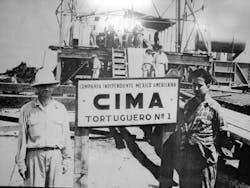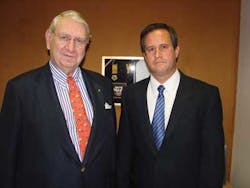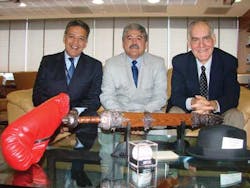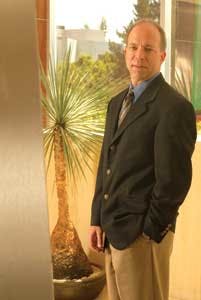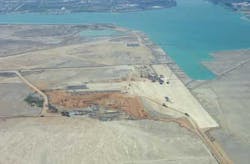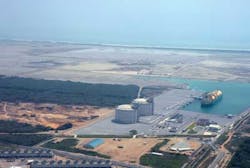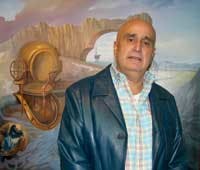Mexico: New times, new opportunities - Pt.1
Since the Gulf of Mexico Exploration Co. launched the first drilling activities in Veracruz in 1868, the Mexican oil industry rapidly developed under the control of foreigners. Over the years, demand for oil grew steadily and both the Mexican people and their government wanted the oil back.
A first step was made in 1917 when the Political Constitution of the United Mexican States was drafted. Article 27 of the Mexican constitution, which has become famous over the past 90 years, states that the Mexican nation has direct ownership of all natural resources. This includes hydrocarbons on the continental shelf and submarine shelf of the islands.
The next step towards regaining control from the foreign companies was the creation of the Petroleum Workers Union on January 18, 1936, which at present still has 5 representatives on PEMEX's 11-member board of directors. Several years after putting the process in motion, President Lázaro Cárdenas made history when he announced the expropriation of the property of 17 foreign oil companies on March 18, 1938. To emphasize the importance of this event, Mexico is still celebrating Expropriation Day as a public holiday.
On June 7, 1938, providing the Mexican petroleum industry with a national champion, President Cárdenas issued a decree creating Petróleos Mexicanos. Today, better known as PEMEX, the company holds the exclusive rights of exploration, production, refining, and commercialization of all hydrocarbons in Mexico. The super-giant Cantarell field, discovered in 1976, has been the backbone of the Mexican oil industry over the past 3 decades.
It quickly became the second-largest producing oil complex in the world and turned Mexico into a leading oil producer and exporter. Mexico, the world's sixth-ranking oil producer in 2005, has become crucially dependent on PEMEX, the world's third largest oil company in 2004 in terms of crude production which is only preceded by Saudi Aramco and NIOC. Although PEMEX has become a symbol of national pride and a pillar of the Mexican identity, the monopoly has slowly been losing its invincibility.
Actually, many argue that Mexico's state oil monopoly is in critical condition. For a long period of time, the state monopoly was consistently strengthened, meaning that the whole structure of the Mexican oil and gas industry increasingly reflected its monopolistic nature. Now, more and more stakeholders are characterizing PEMEX as an inefficient company that has become the piggy bank of the Mexican government due to the lack of fiscal reform.
While the international oil majors have been posting record profits in recent years, PEMEX continuously reported multibillion dollar after-tax losses since 1998. Last year, PEMEX contributed 93.2% of its profit to the Mexican treasury, accounting for almost 40% of the country's federal budget. This unremitting financial draining of PEMEX, in combination with reserves replacement rates of 41% in 2006 and 26.4% in 2005, has created a situation that is unsustainable over the long term.
During the celebration of the 69th anniversary of the expropriation of the foreign oil companies, President Felipe Calderon, the leader of the National Action Party who came into power on December 1st, stated that "PEMEX will always belong to all Mexicans." However, Roberto Newell Garcia, General Director of the Mexican Institute for Competitiveness (IMCO), warned that "If we do not succeed in introducing the required reform in the oil sector within 5 years we won't have PEMEX anymore."
Time to shake things up in the Mexican oil and gas industry?
Reform is critical for the future development of the Mexican oil and gas industry, but the degree of reform is at the center of political and societal debate at the moment and opinions are highly divergent. On one side of the spectrum are political leaders such as Cuauhtémoc Cárdenas, son of former President Lázaro Cárdenas and founder of the Party of the Democratic Revolution, Mexico's leading opposition party. His last name has important weight in Mexico and he is a strong protector of PEMEX's monopoly and the legacy of his father.
"I wouldn't be thinking of reforming the Constitution. We can develop the oil industry without a need of reforming the Constitution. I think that activities such as exploration and exploitation should remain the exclusive right of the Mexican state," he emphasized. However, he agreed that "The Mexican government will have to find other sources of income, different from PEMEX, to meet its fiscal needs. PEMEX has to be liberated from this burden."
Those on the opposite side take equally strong positions and even question the wisdom behind President Calderon's decision to rule out amendments to the Mexican Constitution in the near future. Roberto Newell Garcia, reasoning with Mexico's competitiveness in mind, summarized his thoughts in a letter to Santa Claus. "Dear Santa, please eliminate Article 27 of the Mexican Constitution. Let there be competition in the energy sector. Dear Santa, as a consequence of this, it could happen that PEMEX will suffer enormous distress as a corporation because it is grotesquely overstaffed and many of its assets are not very productive anymore. Dear Santa, make this change process as painless as possible."
As opposed to many Mexicans, he is not praying that PEMEX will be saved. "I would be glad if PEMEX were saved, but that is not what I think Mexico needs the most. We need a vibrant, viable, competitive, energy sector," he emphasized. "Like all Mexican chauvinists, I would like to see our flag carriers succeeding. For example, I would like the Mexican soccer team to do well in the World Cup. But I think that we are closer to winning the World Cup than we are to having a world class competitor in PEMEX; and we are not very close to winning the World Cup," he concluded.
Fiscal, legal, and regulatory reforms have proved to be very unpopular in Mexico, creating a hurdle that previous presidents have not been able to overcome. However, continuing the current status-quo might prove to be suicidal. As a long-term observer of Mexican politics and business, John M. Bruton is a firm believer that the Mexican nation itself will need to define its future. "One of the things that the country is remarkably good at is crafting its own unique solutions," noted the senior managing director of Manatt Jones Global Strategies.
He continued, "The decision therefore has got to be entirely Mexican. Technical outsiders can talk about resources and potential resources, but they are not the ones at the switches." Ing. Juan Casillas, managing director at Manatt Jones, added that "In the end, PEMEX will have to stop being an appendage of the Ministry of Finance in order to run the organization in a business manner. The Ministry of Finance will have to realize that investments in exploration, production and refining, for example, take time and money but the payback is much greater. Finding the right formulas is the key."
Rising investment in E&P, better late than never
With US$13.9 billion, the budget of PEMEX for 2007 is the highest budget in the history of the company, but Mario Gabriel Budebo, Mexico's Undersecretary of Hydrocarbons, puts this figure into perspective. "This achievement is not necessarily sustainable, for it is associated to public expenditure based on current high oil prices. In order to keep this level of investment in the future, it would be necessary that oil prices remain at their current level. Only permanent and significant investment in exploration and production will enable PEMEX to maintain production levels and improve in the mid-term, its reserves replacement rate, currently below 100%. In this sense, new formulas to finance PEMEX have to be discussed in order to achieve a reserves replacement rate close to 100%, desirable for the country."
The sustainability of PEMEX's contribution to the Mexican budget appears to have become a factor of political importance. "Mexico should not only benefit from its natural resources for only one generation, we should benefit for many more generations. We have a lot of work ahead of us to ensure that PEMEX will be able to continue making this vital contribution to the development of the economy and to social expenditure," concluded Budebo.
On December 31, 2006, Mexico's proved hydrocarbon reserves equaled 9.6 years of production, against 11.0 years in 2004. In combination with a reserve replacement rate of 41% in 2006 and the long lead times between exploration, development, and production; the urgency of increasing exploration investment becomes obvious.
In November 2006, before the publication of the 2007 budget, PEMEX indicated it is critical to invest US$18-20 billion a year in exploration and production to compensate for the declining output from the Cantarell field, which is expected to decline at an average rate of 14% a year between 2007 and 2015. Nevertheless, capital expenditure for 2007 has been capped at US$13.9 billion. PEMEX's Exploration and Production Division, as well as the E&P service industry, must have found it encouraging that US$12.3 billion, 88.5% of the budget, has been earmarked for exploration and production activities.
Challenges for PEMEX
Recognizing that the future of PEMEX is intertwined with the future of Mexico, President Calderon had to carefully pick the right man to steer PEMEX through a very challenging administrative term. He turned to Jesús Reyes Heroles, former Mexican Ambassador to the US (1997-2000) and Minister of Energy (1995-1997) in President Ernesto Zedillo's government. Showing great awareness of the weight that is resting on his shoulders, Jesús Reyes Heroles stated that "the kind of PEMEX that we aim to devise in the next 10 to 15 years has a lot to do with the kind of country we are visualizing."
After being appointed as director general of PEMEX on December 1, 2006, he was quick to emphasize that "the institutional context in which PEMEX operates does not favor effective management and does not allow the company to capture the very many opportunities that have been emerging in the energy sector." PEMEX has undoubtedly been losing opportunities due to the difficult operational and financial situation that the company is facing. "Other companies are running and we are not even walking, sometimes we are really standing still," recognized Jesús Reyes Heroles.
Mexico's recently appointed Undersecretary for Hydrocarbons, Mario Gabriel Budebo, took up his new post on the same day as Reyes Heroles. As one of the top officials in the Ministry of Energy, he is destined to play a key role in the implementation of a more enabling institutional context that enables PEMEX to move forward. He emphasized the importance of designing mechanisms that allow PEMEX to obtain access to more financial resources to intensify exploration activities.
"The mechanisms that will enable PEMEX to keep more of the revenues from crude oil and natural gas production are currently under discussion, and there are several possibilities," he stated. Most likely these mechanisms will remain under discussion for at least the remainder of 2007.
The outcome of this debate will be instrumental in defining the balance that will be struck between increasing PEMEX's budget and decreasing the tax burden on the company. Reyes Heroles does not have direct control over either budget or taxation, but he boldly stated that "PEMEX cannot keep paying as much taxes as it has been paying in the past. The numbers vary, but basically the reduction in the tax payment of PEMEX has to be around 1.2% of GDP; that would be around US$10-11 billion."
Cuauhtémoc Cárdenas stated: "It is an obligation and responsibility of the administration to improve the operation of PEMEX in many ways to make it more efficient. It's unacceptable to have an inefficient entity," he emphasized.
Efficiency: blending stability and progress
PEMEX will not be facing this challenge alone, as the world leading providers of automation and process management have flocked to Mexico to offer their services.
Increasing efficiency to create a solid platform for growth is exactly what Ing. Pedro Farinas, a Cuban American, had to do when he arrived in Mexico in January of 1995. He joined Schneider Electric Mexico as its sales and marketing vice president in the middle of the Peso Crisis. On his first day he had 300 people reporting to him, one week later only 200 were left. "It was a very stressful time and bad for business," he remembers.
However, it was already better than 1994, which had been the year of integration of the various companies that Schneider Electric had acquired in Mexico. "So 1994 was the transition year and 1995 has become the base year from which we have built our success," explained Farinas, before boasting that "Schneider Electric Mexico has moved from being a loser in 1995 to now being one of the Top 5 profitability countries in the world of Schneider Electric which includes 190 countries."
In addition, Schneider Electric Mexico has become one of the group's Top 10 countries in terms of sales in the domestic market. "Our market share varies from segment to segment, but we are by far the number one market share holder in Mexico for our scope of products and solutions. In 1995, we also started to grow our internal export activities. In 1995 we exported about US$4 million, while this year we will export close to US$1 billion," summarized Pedro Farinas, who moved up to become president and general director.
Schneider Electric's companywide commitment to customer satisfaction is brought to life through a program called NEW 2, which stands for ‘New Electric World 2.' This program focuses on three aspects: growth, efficiency, and people. According to Farinas, these are the 3 elements that guide a successful company. "It really all starts with people. People create efficiency and when you have an efficient set of processes then you can have growth. Growth is an output and not an input," lectured Farinas.
Critics of the strong influence of the labor union on PEMEX's operations and the resulting alleged overstaffing, may disagree that people create efficiency, but Farinas surely has proved his point. "Last year we grew 25%, which is truly outstanding for a market leader operating in an economy that grew 4.8%."
The PEMEX account is a national strategic account for Schneider Electric Mexico. "We are an important supplier to PEMEX, but we can become much more important if we continue moving from being a supplier of products to being a supplier of solutions," noted Farinas. Ing. Ernesto López Camacho, the sales director in charge of the PEMEX account, noted that PEMEX is increasingly demanding total package solutions that enable the company to deal with single suppliers.
"We continuously adapt our products to PEMEX's needs and specifications," he stressed. "The presence of our different products is continuously evolving across PEMEX's refineries, offshore platforms, petrochemical complexes, and pipelines." In an environment of everlasting change and development, Schneider Electric relies on the stability of its management and its lead brand, Square D, which is widely recognized in Mexico after a 60-year presence in the country.
During the recent Schneider Electic oil and gas conference in Dubai, Jean-Pascal Tricoire, chairman of Schneider Electric, recognized that Mexico has taken an important lead in oil and gas through its ample offer in automation and control. "We don't have the same strength in automation and control as in electrical distribution, where the company is market leader, so there is a great opportunity for us to expand our position in this segment," realized Farinas.
This ambition was immediately supported by Enrique González Haas, vice president marketing and strategic development, who stated: "We are number 2 in automation and control in Mexico, but we have very aggressive plans to become number one."
Increasing investment in cost saving initiatives
While Schneider Electric's entry into the domain of automation and control represents diversification from its core business of electrical distribution, automation and control have always been a core business for companies such as Emerson Process Management and Rockwell Automation. First of all, the efficient operation of the matrix structure that Reyes Heroles aspires to optimize is heavily reliant on the installation and optimization of automation and process control systems.
"There are a lot of efficiency gains that can be obtained with some additional investment," recognizes Reyes Heroles. "Our first estimate of the potential cost reduction is in the neighborhood of US$1 billion, which is about 10% of our operating expenses. This is not trivial and has been quite well identified. I think that we should aim for more and we are in the process of putting together a strategy to achieve precisely that."
According to Alfredo Carvallo, director general Mexico and Central America for Emerson Process Management, a conservative estimate is that PEMEX could achieve a 30% reduction in production costs through automation. In addition to this significant improvement, PEMEX should strive to continuously increase its efficiency level. "There is no need to aspire to directly jump to the efficiency levels of ExxonMobil or Shell," reassured Carvallo.
"Our promise is that with the same assets our client can increase efficiency by at least 2% following the implementation of our PlantWeb solution. This is combined with a reduction in installation cost of up to 30% as mentioned before, while projects can be implemented much faster. Our offer to the industry is exciting and enabled Emerson to grow at a double digit rate for the past 5 years."
Mexico has a lot of potential, but decisions have to be made immediately in order to maintain the current crude oil production level. "We can help Mexico in this process," offered Carvallo. To accelerate its pursuit of efficiency through process optimization and control, PEMEX will really have to partner with companies that possess the required knowledge and not re-invent the wheel. "Automation systems will help PEMEX to predict the performance of their plants, avoid loss of production, and of course monitor all equipment on its wells. We cover everything to improve their efficiency, increase reliability and availability, and reduce variability," noted Carvallo.
He has identified 2 trends that support his vision. "First of all, a new generation of employees that pursue new technology is rising in the ranks of PEMEX. Secondly, PEMEX has traditionally tried to do everything in-house, but nowadays the company is increasingly outsourcing new technology implementation to external technology partners, which is really a way of transferring the technology into the Mexican oil and gas industry."
Importance of the time horizon
Investment in efficiency gains yields an obvious return, but in the planning of such investments PEMEX is facing the same illnesses that other public entities have in terms of planning. "We don't have multi-year budgeting, not even of our investment program, which makes the planning and budgeting program extremely inefficient," explained Reyes Heroles. A multi-year budget, with a planning horizon that stretches until 2015 or 2020, would enable PEMEX to define its long-term goals. It would also enable service providers to assist PEMEX in developing maintenance strategies.
"Every proposal has to be very well justified from a financial payback point of view. Changes in technology today are almost always justified by the overall savings associated with the system life cycle versus which vendor's equipment is ‘cheaper'," explained Robert Ninker, Rockwell Automation's director general for Mexico & Central America.
"A classic example would be the energy saving initiatives that PEMEX has started using variable speed drives technologies. We have been able to clearly demonstrate that despite larger initial capital investments PEMEX will realize greater energy savings over the extended life cycle of the project," she stated.
Since Rockwell Automation entered Mexico in 1984, PEMEX has mainly acquired its installed based of control systems internationally. Rockwell Automation has been very successful with the OEMs that sent their equipment into Mexico, and as a result has built up a significant installed base. "Over the years, we have seen a significant change in PEMEX's approach to automation, especially in the areas of safety control and strategic maintenance," analyzed Ninker.
PEMEX had a number of incidents recently and is highly sensitized to being more pro-active with its maintenance. PEMEX is moving toward more predictive maintenance strategies, which, as Ninker outlines, involves putting systems in place to predict potential problems before they occur, and of course, automation technologies are essential to meet that objective. While sitting down with the information hungry people in PEMEX, Ninker has been "very impressed with their openness toward incorporating new technologies in their systems since this is not so common in similar state owned enterprises."
"These develoments have really taken our relationship with PEMEX to a new level," confirmed Ninker, referring to Rockwell Automation's evolution from being a hardware supplier into being a collaborative partner in long-term maintenance and support of PEMEX's systems. He concluded with the following observation: "It appears that PEMEX is making a significant shift from price and relationship-based buying behaviors towards a procurement policy based upon solid long-term value. This shift is really encouraging for value suppliers like Rockwell Automation."
Think global, act local, perform regional
ABB is truly a global company. "We manage the knowledge and know-how through our centres of excellence and resources in more than 100 countries around the world that are focused on providing oil and gas solutions," explained Armando Basave, ABB's country manager in Mexico. "Whether a project is in Mexico, Venezuela, or South Africa there always is an engineering center that can provide top solutions by using the same technological platform for different markets." To strengthen this approach, ABB invests around US$1 billion per year in R&D to work on solutions that provide improved performance for its customer's processes and businesses.
ABB's local team customizes any solution in order to meet the Mexican specifications and needs. To be closer to the customer, ABB has expanded its operations and increased its presence in Coatzacoalcos, Villahermosa and opened new facilities in Poza Rica and Ciudad del Carmen. "Therefore, ABB professionals are deployed along the main oil and gas hubs for PEMEX," noted Basave. "The key to ABB's success is the interaction between the centers of excellence and the local teams in over 100 countries where ABB has presence." A true example of ‘think global, act local.'
Most of ABB's projects in the Mexican oil and gas industry have concentrated on modernization processes. Some examples include the Production Platform Ku-H in the Ku-Maloob-Zaap field and the Cryogenic Plants at GPC Burgos. Basave emphasized that in both cases ABB has supplied world class technology providing added-value for PEMEX and the country.
"As an example, we are offering solutions for decreasing the use of turbines on offshore platforms. We are able to feed electrical power from onshore to offshore through ABB's HVDC Light technology for transmitting electrical power over long distances by submarine cables, with improved efficiency and lower cost. This technology, which is only commercialized by ABB, eliminates the need to burn oil or gas on the platforms," boasted Basave.
In recent years, Mexico has become a center of excellence for engineering work in the North American oil and gas market. "During the last 3 years, we have proved that the engineering capabilities in Mexico match international standards." The North American region was utilized as a pilot project for ABB. In North America, targets based on regional performance were established, providing ABB's operations in the different countries with a common goal and replacing the sort of silo mentality that was prevalent.
This approach has proven to be successful and nowadays different regions in the world are working in a coordinated way with the support of the Centres of Excellence. Building on this success, ABB's vision for 2009 is to be recognized as the leader in power and automation technologies. Getting this recognition is not that simple. Although ABB Mexico is hiring professionals in Mexico to facilitate the ambitious plans of the Canadian oil and gas industry at the moment, the Mexican oil and gas industry will be at the core of Basave's ambitions.
"PEMEX is in need of large investments to increase its capabilities in exploration and production. We believe that PEMEX has a lot of challenges in the coming years, which call for a holistic approach, to which ABB can contribute," he concluded. "My dream is to grow ABB Mexico by 100% in revenues over the next 10 years."
Efficiency is doing things right; effectiveness is doing the right things
While the size of the budget and PEMEX's tax liabilities are at the center of debate, cost management is an equally important issue. PEMEX has to increase its cost efficiency, which is a challenge for a company consisting of 4 subsidiaries that operate with substantial independence and individual objectives. Some people think that PEMEX should integrate the 4 divisions into one firm again.
However, Reyes Heroles' view is that the creation of the 4 subsidiaries brought more transparency to an organization that was characterized as a black box, but, it did create duplicity. Of course, PEMEX decided to concentrate several activities at the corporate level, but in many cases the centralization process did not eliminate the duplicated activities in the subsidiaries, it just added to the duplication and unnecessary costs.
Having identified efficiency as a focal area for PEMEX, Reyes Heroles explained that PEMEX has to take the best of the 2 processes: a matrix solution. This would enable PEMEX to reap the benefits of having the 4 subsidiaries, while creating efficiency gains. Information, communication, and control systems are destined to play a key role in the successful implementation of Reyes Heroles' vision.
In addition to duplication, PEMEX has taken a diversification approach in the development of the creation of its information, automation, and control systems infrastructure, which has resulted in rising maintenance costs. The industry is arguing that at some point PEMEX will have to start acting like other private oil companies and migrate toward a tighter set of equipment standards in order make their systems a more maintainable in the long run.
"The only way to pursue operational excellence and productivity is by creating an environment that produces the right information in the right context at the right time, with visibility of the entire enterprise," commented Ygor Guilarte. "The concept is very aggressive and challenging, but it is the right path to take for the next decade."
As managing director Mexico and Central America of Invensys, he is introducing InFusion ECS to the Mexican market, an innovative solution that optimizes both the availability and utilization of legacy automation and control systems, expanding their life cycle.
"With minimal investment in comparison to a traditional implementation, we offer maximum return through business optimization, raising productivity levels and increasing our clients' focus. We believe that putting the right platform and the right architecture in place will offer more value than buying the latest computer or the latest chip. Departments that typically worked separately and had different targets are linked by InFusion, which will optimize economical value," explained Ygor Guilarte. This shift in targets makes the implementation more difficult to achieve.
"We believe that by providing dynamic, real-time performance measurement, we can help our customer realize the undeniable benefits of their automation investment," stressed Guilarte. "That is important from a cash-flow and capital expenditure point of view for our customers, who are continually demanding higher quality at lower costs."
Similar products have been considered by Invensys' competitors. Most of these actually created middleware layers to fill the gap between the different applications. "We took that technological vision of unified automation to the next level and broke the cycle of delivering just the next version of a Distributed Control Systems and, instead, created the next generation of automation and control - the Enterprise Control System," boasted Ygor Guilarte.
A few areas of PEMEX have already tried the middleware approach and have recognized issues such as the maintenance of duplicated databases, delays and underperformance associated with these solutions.
According to ARC Consulting Group, Invensys has a 2- to 3-year window before the market will react to its technology. "Of course, similar products will be introduced and, sooner or later, there will be competition, but we are established as the visionaries introducing the concepts and we will capitalize on that advantage," stated Guilarte. "We have moved forward from only closing the control loop of the plant to closing the business loop of the organization."
Life-saving technology investments
PEMEX makes considerable investments in the implementation of IT on offshore platforms. "PEMEX has one of the lowest accident rates in the oil and gas industry," stated Guilarte. Invensys' most recent flagship project involved the implementation of 11 Triconex Safety Instrumented Systems as part of an operations, safety, and security upgrade for PEMEX in the Ku-Maloob-Zaap facility.
The Ku-Maloob-Zaap oilfields, located off the coast of Campeche State, play a vital role in Mexico's national oil production strategy, and are destined to provide the essential compensation for the declining production in the Cantarell oilfield. Ultimately, Ku-Maloob-Zaap will add more than 100 new wells to PEMEX's asset base, producing approximately 800,000 b/d of heavy Maya crude. While fire safety is a key priority in one of PEMEX's most promising oilfields, it is not yet well embedded in the Mexican mindset.
Many people are not aware of the safety factors that they encounter in their everyday life. "How many precautions do you take every day?" asked Horacio Fajer. When he joined Kidde de Mexico in April 2005, he was shocked with the level of awareness of safety issues in Mexico.
"Last November we organized a congress for the security managers from top companies in Mexico City. The first thing that caught my attention in the meeting room was that the table with the coffee was set up in front of one of the emergency exits. In the other corner there was a large piece of sound equipment blocking the fire extinguishers," explained Kidde's president. "Awareness about fire safety is not culturally embedded in Mexico and I think that Kidde can play a key role in helping to educate the public."
Mexican people are driven by the need to comply with regulations rather than the opportunity to protect lives by putting in place protection systems against fire and security hazards. "We want to prepare people to protect themselves in case of an accident or emergency, but we still have a long way to go on this cultural shift," he recognizes.
Kidde itself has just undergone a major internal cultural shift since it was acquired by UTC Fire & Security, a company with a strong focus on quality process control. Acquiring talent that could accelerate the organizations development has been particularly challenging; good fire protection technicians are difficult to find which makes training essential.
In the transformation process Kidde has shifted from offering fire protection products to offering integrated solutions. "Today we perform to PEMEX's highest standards, the company has a strong focus on fire protection and safety, and delivers the highest quality fire protection systems," emphasized Fajer.
Kidde has a frame agreement with PEMEX to provide maintenance for the fire protection systems that are already installed on its platforms. Those systems may or may not be provided by Kidde. "Our challenge has been training new employees to understand the differences between the various systems installed on the platforms," noted Horacio Fajer. "We have been pushing PEMEX to standardize its fire and safety systems so that we can optimize both system performance and the efficiency of our maintenance and service."
As a worldwide enterprise, Kidde can rely on a wide breadth of product offerings. "One of our sister companies, Detector, is the technology leader in gas and fire detection systems. According to our customers, which include Shell, Chevron, and PEMEX, there is no better detection technology in the marketplace today," proclaimed Fajer. "We integrate these detectors into all of our different systems."
Kidde has been working with contractors that are constructing PEMEX's new platforms as turnkey projects. The challenge is to be part of the process from the very beginning so that Kidde can install the complete safety configuration.
"One of our missions is to protect human life. If you don't have that as your main objective then you have failed," stated Fajer. "However, when we meet our objective and our equipment and systems behave as they should, then nobody hears about us and our customers avoid having to deal with any incidents." It is easier to create awareness of fires, explosions and other safety incidents than to create awareness of successful fire protection solutions. Nevertheless, Kidde is expanding its presence from offshore platforms, making inroads into refineries and petrochemical plants.
These expansions will be essential to meet Kidde's ambition, as stated by Fajer: "We want to double our business in Mexico, through both organic growth and acquisitions in four years and PEMEX is going to be critical in achieving this ambition." He realizes that "educating people about the fire and security hazards around them is the key to doubling the business." In less than 2 years he has become truly passionate about fire protection. "I really believe that this is something that our country needs," he concluded.
The right target market for satellite communication
Last year, Globalstar, a leading provider of satellite voice and data services, celebrated its tenth anniversary in the Mexican market. This decade has been a rollercoaster ride because worldwide, the Globalstar story has been full of ups and downs.
The company started as a voice service that was complementary to cell phone coverage. Twelve years ago, Mexico's cellular coverage was not as extensive as today. However, Globalstar made a mistake. "We didn't realize at the time that our markets were more vertical markets that were out in the field and at the same time, our competitor got into Chapter 11 when we entered the market," remembers Eduardo Pacheco, CEO of Globalstar Mexico.
Eventually Globalstar Mexico's parent company, Globalstar LP at the time, also went into Chapter 11 due to lacking demand. All the service providers went into hibernation mode. At the time, Globalstar Mexico had 170 employees spread over offices in Mexico City, Monterrey, and Guadalajara, which were subject to a large scale restructuring. "We stopped all of our marketing efforts and had to close all regional offices and tried to survive until Globalstar LP got out of Chapter 11," explained Pacheco. Eventually they did when Thermo Capital, a venture capital firm, bought Globalstar LP, which became Globalstar Inc. Subsequently, it began making profits again.
The new Globalstar Inc. was basically created by the purchase of the satellite constellation in the Canadian, United States, Carribean, and European operations. In these regions the company is not only the satellites operator, but is also directly responsible for the client base. The remaining countries, including Mexico, are called Independent Gateway Operators, each operating an infrastructure in their respective countries worth around US$25 million in order to offer the Globalstar service.
"After Chapter 11, we made more focused efforts towards our real target markets such as the oil and gas, agriculture, energy, maritime, and construction markets, among others," noted Pacheco. One of the other initiatives that the new owner of Globalstar Inc. launched and made profitable, is the data business. "Fortunately, we are now in a position in which we can see a future that is promissory," stated Globalstar's hands-on manager.
The increased focus on oil and gas has resulted in a set of successful projects in recent years. For example, Globalstar Mexico is working on an important cathodic protection project with PEMEX. "We are capable of controlling the very expensive equipment which is operating in remote locations along the pipelines to correct potential corrosion problems," said Pacheco.
Another interesting project concentrates on volumetric control in petrol stations. "When 10,000 litres of gasoline are delivered to a petrol station it will have to sell 10,000 litres of gasoline, it cannot sell 11,000 although this tends to happen in Mexico." In urban areas the volumetric information can be sent through the internet or cellular networks for control purposes, but this is not an option for the approximately 1,500 petrol stations in remote locations. Globalstar is offering these petrol stations the Duplex modem in cooperation with one of the top companies in volumetric control in Mexico.
Another example of Globalstar's advancement in the oil and gas industry is the cooperation with the Instituto Mexicano del Petroleo (IMP), the R&D arm of PEMEX. The IMP operates mobile units which measure productivity in oil fields. These units collect information that has to be sent to the central office and the only way to do that is via satellite connections.
In addition, Globalstar is working with many suppliers to PEMEX. "For example, we offer voice and data services to Fugro Survey, which does geophysics studies in the Gulf of Mexico, Ingenieria Subacuatica, and Schlumberger," underlined Pacheco.
After a quite challenging decade that was marked by the struggle for survival, nowadays, Globalstar sees significant growth opportunities in voice communication for PEMEX, which has only 200 satellite phones, while other oil companies in the world are using many more satellite phones per employee. However, Pacheco sees growing Globalstar's position in data as his biggest challenge.
"The potential in data is tremendous. Actually, we participated in another tender which we unfortunately did not win, for the tracking of the petrol trucks. I think it is a good thing that PEMEX is making this effort to track the most important asset it has: the gasoline. There is a funny example of an application using our technology that someone developed in Europe in order to track cows. Out of the cows you obtain milk and out of the milk you obtain cheese, so this is a company that makes a very sophisticated cheese and they are monitoring where the cows have been and what they have been eating which subsequently defines the quality of the cheese and they are using Globalstar to track the cows in order to manage their operation. Such examples show that there are no limits to our technology."
Just in time
When Juan Manuel Pineda joined J. Ray McDermott, after a long career in ICA Fluor, the large investment in a new construction facility in Mexico was already on the drawing board. Mexico's Port of Altamira, in the state of Tamaulipas, will be the site of this new construction facility which is destined to complement J. Ray McDermott's existing Gulf of Mexico yard at Morgan City, Louisiana.
J. Ray McDermott has been working with PEMEX for more than 30 years in marine construction, mainly platforms transport and installation and subsea pipe lay, but also supporting PEMEX's offshore design efforts. The signature of a 30-year partial concession agreement with the Port Authority of Altamira has been a milestone in the company's history in Mexico, and construction of the fabrication yard already started on December 18, 2006.
"This yard will be a 2007 model of the construction yards in the J. Ray McDermott world," explained Pineda. "We have combined inputs from yards around the world, and this yard will be able to serve both the Mexican and the American part of the Gulf of Mexico, as well as South America, West Africa, the North Sea, basically anything that is located in the Atlantic Ocean."
A range of factors were decisive in selecting the Port of Altamira as the preferred location for this investment. J. Ray McDermott will be benefiting from the available 14 meters water depth on the navigation channel to the Gulf of Mexico. This accommodates the construction of the largest fixed and floating offshore oil and gas structures and semi-submersible transportation vessels that are currently known in the offshore industry.
The location of the yard in an industrial port eliminates the complications associated with operating in a port in an urban area. In addition, platforms have been constructed in the Tampico area by the Panuco River for 35 to 40 years, which has resulted in a well developed labor and supplier base operating on a cost advantage relative to the United States that J. Ray McDermott can rely on today.
"Although J. Ray McDermott already has other yards in the Gulf of Mexico that can serve the Mexican market, you have to be based in Mexico if you want to be competitive in the PEMEX tenders," noted Pineda.
"In Mexico nobody can offer the same complete solution. We will benefit from the fact that J. Ray McDermott is vertically integrated in offshore construction services. We can design, fabricate, transport, install, and commission platforms with our own resources, while we can lay pipes as well. We can develop the complete infrastructure for an oil field and aim to be a one-stop shop for PEMEX. Our competitors have capabilities to be a one-stop shop but they have to subcontract the marine work, which is the risky part."
Nevertheless, J. Ray McDermott's competitors are starting to follow its strategy. "Fortunately we are first and we are trying to take advantage of our head start," stated Pineda. "It takes time to construct a fabrication yard so we will stay ahead of the competition."
"We are targeting to begin the first phase of operation the third quarter of 2007," commented Pineda, "and we intend to load out our first platform from Altamira in the summer of 2008." Although this year PEMEX will be sending out a substantial number of tenders for well head and drilling platforms, numerous large scale projects are projected for 2008 and 2009.
"The PEMEX market is a promising market," recognized Pineda. As J. Ray McDermott's Altamira yard matures and becomes more experienced, the ambition is to start bidding for projects in the American part of the Gulf of Mexico. This involved deepwater projects which require big structures and is another big chunk of work where J. Ray McDermott sees opportunities. "In the future we will also be looking for opportunities in the South, in Trinidad and Tobago and Brazil, decommissioning in the North Sea and the west coast of Canada. It is a big ocean," concludes Pineda.
Venezuela, a breeding ground for engineering capability
While American service providers have a strong grip on the Mexican oil and gas industry, there has been an increasing influx of experienced Venezuelan engineers, geologists, and geophysicists in recent years.
While the majority of these Venezuelan industry experts are employed by the broad range of Mexican and international service providers in the Mexican oil and gas industry, a select group is instrumental in the international expansion of Venezuela's own service industry. Jantesa, a frontrunner in the Venezuelan expansion process, entered the Mexican market in 2005.
Over coffee with Gamal Ayoub, Jantesa's executive vice president, Ing. Ernesto Verdugo decided to take the challenge of building Jantesa's presence in Mexico. Relying on 40 years of industry experience, he embarked on a mission to ensure that the Mexican operation would contribute at least 30% of Jantesa's annual turnover in a decade. "During the first stage of market entry I was operating as a Jantesa's representative for Mexico. We did not open any offices yet, but suddenly we won our first project in a PEMEX tender," remembers Verdugo.
This project was destined to be a critical first step in establishing a successful track record and a reputation in the Mexican market. The project was completed on time and within budget, but Jantesa undoubtedly had to use its imagination to meet the tight time schedule.
Ing. Verdugo took the time to share the following anecdote. "This project covered the installation of a pneumatic system to handle polyethylene from the swing plant, which was being constructed by Mitsubishi Heavy Industries for PEMEX. We had to deliver the critical stage by February 4, 2006. In October/November 2005 both PEMEX and Mitsubishi HI were sure that we were not going to be able to finish that critical portion on time."
"At this point in time we had a meeting with all our engineers to discuss what we had to do to be able to finish on schedule, and the following calculations resulted in a Plan B. The initial reaction of PEMEX was that they almost wanted to throw me out of the window. They told me: "Ingeniero don't you know that you cannot make changes to an EPC contract, you have to do whatever is in the contract." I explained to them that I was not worried about our abilities, but I was worried that PEMEX would single us out as the cause of not being able to start production of the swing plant."
"I told the people at PEMEX that this was a proposal that they had to consider simply because the cost associated with not being able to start production justified the perceived risk associated with accepting our Plan B. At this point they still thought that we were out of our minds, but after a weekend of reflection they approved Plan B. In essence we proposed a temporary shortcut, which we successfully completed by February 4. At this point, the Japanese were behind schedule and it turned out that the shortcut was not needed after all. Nevertheless, we fulfilled our promises and most importantly, PEMEX recognized us as a good engineering and construction company with imagination to solve problems."
This first project has put Jantesa Mexico on track towards accounting for 30% of Jantesa's overall revenue in the future, even though Venezuelan companies are facing particular challenges. Not all international companies can participate in all PEMEX tenders. Some tenders are open only to domestic companies or companies from countries with a Free Trade Agreement. So when Chavez said that he was getting out of G3 this brought a lot of concern.
Jantesa is trying to cope with this problem and is working on solutions. Nonetheless, Verdugo ended on a positive note, "I think positive and we are going to win, I think we have a bright future. We have a lot to offer to Jantesa Venezuela, and they have a bright future with us."
Being first in the minds of the Mexican engineers
"The quality of the engineers within PEMEX and IMP is impressive and their feedback can be of tremendous assistance for Atlas Copco to make sure that our product development is in line with the requirements of the oil and gas industry, not only in Mexico but globally," started John Cleeve. Having worked for Atlas Copco since 1974 in Great Britain, Belgium, South Africa, and Australia, he now serves as director general of Atlas Copco Mexico.
After exchanging the Anglo-Saxon business cultures for the Mexican way of life, he quickly realized that the success in Mexico would depend on being first in the minds of the Mexican engineers, and particularly those working for PEMEX.
"I think that we can help PEMEX to improve their operational efficiency, to reduce the cost per barrel of oil produced," he stated. Through interaction with PEMEX Atlas Copco strives to introduce the company to more energy efficient and maintenance friendly products. These might have a higher investment level initially but in the long term provides an extremely rapid payback.
"When a customer buys an air compressor, in its first 12 months of operation it will consume that same value in energy as it costs. So if you spend US$100,000 buying a medium sized air compressor, in its first year it will consume US$100,000 in electricity. If we can introduce the latest technology in a form that is safe to use in a refinery environment, then the efficiency opportunities for PEMEX are enormous," explained Cleeve. He believes that cost of ownership, rather than initial investment, should be the driver of future procurement decisions.
Atlas Copco measures its clients' satisfaction by looking at customer share. "If we see that we are winning an increasing share of PEMEX's business then we know that our ‘first in mind, first in choice' is working well," noted Cleeve. The Englishman continued, "I think that we do have strong opportunities for organic growth with PEMEX, which is the priority in Mexico."
The company's flagship product, the ZR Air Compressor, will play a vital role in realizing Cleeve's growth ambitions. In technological terms, it is the first oil-free rotary screw compressor in the world to have ISO accreditation for being 100% oil free. In application terms, it is used to provide the compressed air for the instrumentation and control in refineries. "For many years, PEMEX has used this product due to its safety, its reliability and the quality of compressed air," emphasized Cleeve.
His flagship product will have to continue this strong performance in order to meet Atlas Copco's target of 33% increase in revenue in 2007. Summarizing his future ambitions, Cleeve concluded that "in 2007 we will be putting Atlas Copco first in mind and during 2008 we will be first in choice. We still have another 5 years of President Calderon's term to go and our expectation is that rather strong investment will come from PEMEX."
Growing up hand in hand with PEMEX
After growing up on the grounds of the Minatitlan refinery where his father became the first superintendent in 1938, Luis Vázquez Senties put his entrepreneurial ambitions to the test. After several ideas that never materialized, he decided to join forces with his brother Oscar and a cousin to start operations as a diving company supplying maintenance services to PEMEX's offshore platforms.
At that time, in 1973, the offshore activity was limited and nobody could have foreseen that this small diving company would develop into the omnipresent Grupo Diavaz. "PEMEX had maybe 7 offshore platforms and offshore production was very limited, so there was also little competition for us," stated Vázquez Senties, taking a positive perspective on a small market opportunity. In 1976, when the development of the offshore Cantarell field in the Bay of Campeche started, the world's leading service providers entered the Mexican market to provide drilling, pipeline, and construction services, but the opportunity was ignored by foreign diving companies.
"Constructora Subacuatica Diavaz was allowed to grow and in 1980 we were the second largest diving company in the world, with over 500 divers. We were very lucky to have started a diving company in these circumstances," reflected Vázquez Senties.
Since then, Grupo Diavaz has become a conglomerate of companies and ventures covering the whole value chain of the gas and oil industry through 3 core businesses: marine operations, E&P services, and natural gas distribution.
As part of a consortium that also includes Petrobras and Teikoku Oil, Grupo Diavaz is producing natural gas in the Burgos Basin. "We were planning ahead to take advantage of the opportunities that would be offered through the establishment of the multiple services contracts. We wanted to learn how to be an operator through the partnership with Petrobras, and maybe in the future take advantage of the expertise that we would obtain in Mexico by going into Guatemala, Belize, or Colombia," stated Vázquez Senties.
ENX COMPRESSORS, one of the latest additions to Grupo Diavaz, was created as part of an experiment that PEMEX launched 4 years ago. ENX provides gas compression and injection services to PEMEX Exploration & Production for oil wells in mature fields with declining production. ENX puts in place separators that separate oil, gas and salt water. The sour natural gas is re-injected in the well, which reduces operational costs by over 80% as it eliminates the need for nitrogen injection.
PEMEX is currently producing 15,000 b/d through compressors supplied by ENX. Through such initiatives Grupo Diavaz is preparing itself for potential opportunities for participation in oil production in the future.
Vázquez Senties expects that PEMEX will be awarding medium term service contracts for the management of 4 or 5 mature oil fields. "We will still be service providers, but if we are being compensated for the risk we take in mature oil fields then we will take more risk," noted Vázquez Senties. "I think that PEMEX is going to try to allow private investment and risk taking in exploration and production activities. When we are offered the opportunity to take more risk then we will take it. However, we are not expecting changes in the constitution and private companies to be the owners of the oil."
The strategy of Grupo Diavaz follows PEMEX's investment strategy, and the company is very excited about the opportunities in the coming years. Over the years, Grupo Diavaz has become a sizeable player in the Mexican oil and gas industry, cooperating with companies such as Petrobras, Schlumberger, and Halliburton. "At the same time we will continue to create companies ourselves, following in to footsteps of the success of ENX Compressors and Constructora Subacuatica," emphasized Vázquez Senties.
Another venture that was created in recent years is DeepOcean, a listed company that is renting vessels to Statoil and Constructora Subacuatica, and thus indirectly to PEMEX. Grupo Diavaz is its biggest shareholder, owning about 21% of the company. Last year, DeepOcean's share price increased by 60% and the company recently acquired a dredging company in England for €300 million, therefore the company is growing.
While these achievements would please almost any major shareholder, Vázquez Senties is worried about the fact that an increasing part of DeepOcean's business is done outside of Mexico, right now 25% is done in Mexico and 75% is done in Europe. "It worries us that we are no longer a truly Mexican company but are becoming an international player," he stated before revealing his true ambition. "We want the help Mexico to improve its oil production and make PEMEX a stronger company. We were born with PEMEX, we grew up with PEMEX and we owe everything to PEMEX."


